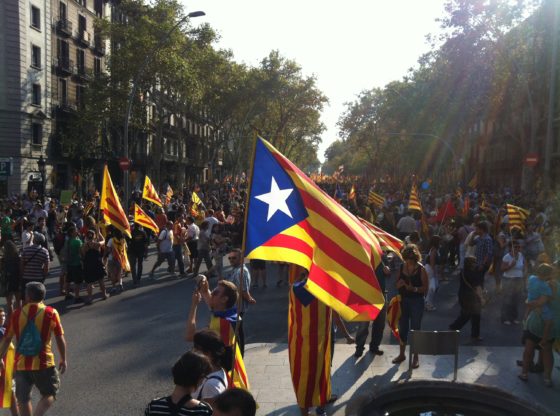In the third article in her Cold War in Concrete series, Julie McDowall examines the plan which would have seen a group of UK government officials dispersed to the seas around Scotland in a passenger ferry, in a bid to protect them from the first effects of a nuclear war.
There are plenty of places to hide in a nuclear war. The question is whether it’d be worth it. The infamous warning that ‘the survivors will envy the dead’ dogged debates on civil defence in the Cold War, prompting many to ask: what would be the point of the struggle to survive?
But for the optimists among us, there are places to which you might flee. South America, perhaps, or a remote island. The ocean itself is rumoured to be good as an aggressor is unlikely to target an empty sea. And what about under the waves? Well, that’s even better. Get yourself a submarine and you’re hidden beneath a vast expanse of water. There has also been a slew of articles recently about the mega-rich buying luxurious bunkers and well-defended properties in New Zealand.
So a billionaire might buy himself refuge on a tropical island but, during the Cold War, the British Government’s response was rather more prosaic: they planned to hide in pleasant old Wiltshire.
THE BURLINGTON BUNKER
Spring Quarry in Corsham provided the lovely stone which complements Bath’s architecture. In the Second World War, the quarry was turned into an underground aircraft factory and then, in top secret plans, transformed into a massive bunker. It would be central government’s hide-out during a nuclear war.
Codenamed “Burlington”, it became operational in 1962. It would have sheltered the Prime Minister and specially selected civil servants, advisors, and BBC workers. There would also have been medical, technical, and catering staff, bringing the total underground population to about 4000.
Burlington was huge. It had offices, dormitories, a telephone exchange, a hospital wing, a BBC studio, and a canteen. It was reportedly supplied with 400 typewriters, 2,320 teacups, 12,000 toilet rolls, and 1,994 ashtrays. The kitchen even had three different types of fork – dessert, fish and table – so that dining etiquette could be observed after the Bomb dropped.
This approach seemed futile, even quaint, in the nuclear age, and the authorities quietly abandoned it, focusing instead on protecting the machinery of government: the state must survive, even if most of its people don’t.
This bunker represented the pragmatic principle of ‘continuity of government’ which had replaced the old idea that war planning was about protecting the population: dishing out gas masks, arranging evacuation, building air raid shelters, and organising civil defence teams to pull people from the rubble. This approach seemed futile, even quaint, in the nuclear age, and the authorities quietly abandoned it, focusing instead on protecting the machinery of government: the state must survive, even if most of its people don’t.
But the plan to shelter beneath Wiltshire didn’t last long. There were suspicions that the Soviets knew Burlington’s location, while the increasing power of nuclear weapons, and the emergence of the hydrogen bomb, made the notion of putting your resources in one place seem foolhardy. So the opposite tactic was adopted: instead of concentrating central government in one location, they would be scattered around the country in secret, remote places. This new plan was given the code-name “Python”.
THE DISPERSAL OF GOVERNMENT
The Python plan became operational in 1968 and split the central government team into five groups, each to be led by a cabinet minister. There would also be six support groups - three devoted to the United Kingdom Supply Agency (UKSA), who’d be in charge of procuring and allocating food and fuel in a post-nuclear Britain, and three for the National Air Transport Agency (NATA), overseeing Britain’s surviving air transport and communications.
Each group would be sent to their secret location in the run-up to a nuclear war, with the hope that some would survive and regroup after the war to resurrect ruined Britain. The huge Burlington bunker was to be their meeting point after the war, although the tiny group of civil servants who knew the Python secret gave the impression to their underlings that it was still to be used as the government’s nuclear HQ. This allowed it to act as a decoy: spies might go snooping around Burlington, leaving the new Python plan unsuspected.
The Python locations were, of course, top secret, but the indefatigable Cold War researcher, Mike Kenner, managed recently to prise them from the Cabinet Office via several FoI requests. They included locations in Cornwall, Dorset, Perthshire, and Wales. Interestingly, one of the Python groups was to be out at sea on a Caledonian MacBrayne passenger ferry.
FORTIFIED NUCLEAR SHIPS
In 1964, the company took an order from the Scottish Office to build three specially fortified nuclear ships. These became the Columba, Clansman, and Hebrides. They would sail around the lochs and islands as ordinary car ferries. However, if nuclear war had approached, one of them would have become a floating nuclear bunker under the Python plan, carrying its group into hiding in the many sea lochs of Scotland where they would be out of the target areas, and able to stay mobile and escape any fallout.
The nuclear ships looked perfectly ordinary, but had unique features such as heavy guillotine-style doors which could seal the car deck against radiation. All the external doors and vents were air-tight. There were also decontamination rooms inside, and the exterior of the ship could be cleansed of fallout with a special sprinkler system.
The Python plan allocated a UKSA group, known as Whiskey Section, to the nuclear ships. The designated ferry would dock at either Oban or Mallaig and receive its group, taking them out to sea where they would, hopefully, survive the nuclear onslaught.
The designated ferry would dock at either Oban or Mallaig and receive its group, taking them out to sea where they would, hopefully, survive the nuclear onslaught.
Mike Kenner says Python was one of the UK’s most vital Cold War secrets. “Without a surviving Python group the country could not be governed, and without a surviving UKSA section the UK could not receive vital supplies of food and oil from overseas. As a result, the country would certainly experience widespread famine within a matter of months. The UK would cease to exist as a viable nation.”
Caledonian MacBrayne sold the nuclear ships in the 1980s. The Clansman had an exotic life after her many Scottish voyages, going on to work in Malta and the Red Sea. She was last seen abandoned off the coast of Sudan and her murky shape can be spotted on Google Earth. The Hebrides went to Turkey for demolition. This leaves the Columba as the only working survivor of the Scottish nuclear trio. She has been refitted as a luxury cruise ship and now sails around Scotland as The Hebridean Princess. Her new owners, Hebridean Island Cruises, confirmed that the nuclear features were removed prior to her sale. There is no question of her resuming her former role.
Where would central government go if nuclear war now threatened? They’re not going to tell us – but the Cabinet Office did inform Mike Kenner that “certain details [of Python] are still sensitive as they bear similarities to plans which are still current.” So we can be sure there are active plans to shelter the present government in a nuclear war. Your disposition determines whether you consider this a comfort, an insult, an irrelevance – or a horror.
Julie McDowall is a freelance journalist, writing about books, TV, and the Cold War. She is currently writing a book on how Britain prepared for nuclear war. You can find her on Twitter @JulieAMcDowall or online at: www.juliemcdowall.com
Feature image: the ship Columba. © Andrew Clark.











